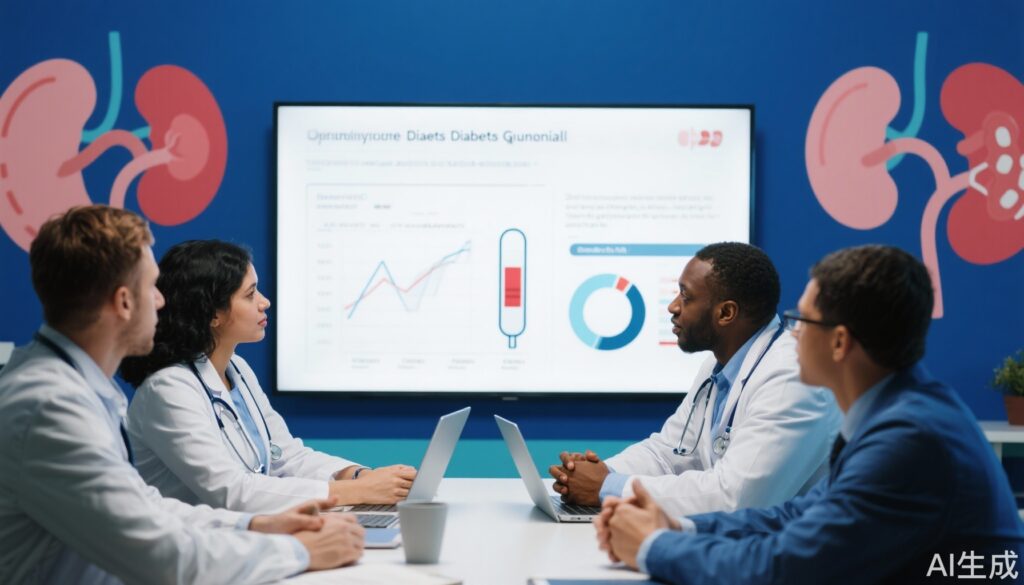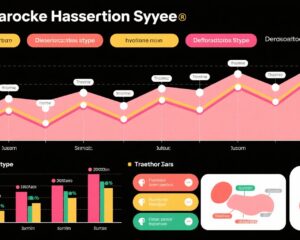Introduction and Context
The American Diabetes Association (ADA) releases an annual “Standards of Care” that clinicians worldwide use to guide diagnosis and treatment of diabetes. The 2024 Standards (Diabetes Care 2024;47, Suppl 1) arrive at a time of rapid therapeutic change: landmark outcome trials have strengthened the role of SGLT2 inhibitors for kidney and heart protection, a new generation of incretin-based agents (GLP-1 and dual GIP/GLP-1 agonists) have transformed weight and glucose management, and diabetes technologies — especially continuous glucose monitoring (CGM) — are being applied more broadly. The 2024 update reflects these advances and aims to translate them into practical, evidence-based recommendations for clinicians across primary care, endocrinology, cardiology, nephrology and allied disciplines.
Why this update matters now
– New drugs and trial evidence (e.g., tirzepatide, broader SGLT2 outcome data) have expanded options for glycemic control and organ protection.
– Greater emphasis on weight management as a core therapeutic target in type 2 diabetes (T2D).
– Growing evidence supporting wider use of CGM, especially in patients taking insulin.
– Increasing clarity about individualized targets, deprescribing in older adults, and cross-disciplinary care (cardiorenal-metabolic integration).
New Guideline Highlights
Major themes and takeaways from ADA Standards of Care 2024:
– Precision, not protocol: Treatment is framed as person-centered and outcome-driven. Glycemic therapy choice should account for comorbidities (atherosclerotic cardiovascular disease [ASCVD], heart failure [HF], chronic kidney disease [CKD]), weight goals, cost and patient preference.
– Broad endorsement of GLP-1 receptor agonists and dual GIP/GLP-1 agonists (e.g., tirzepatide) as powerful tools for combined glucose lowering and clinically meaningful weight loss. The guideline emphasizes their use when weight loss is a therapeutic priority or when oral agents are insufficient.
– SGLT2 inhibitors are recommended for patients with T2D and established ASCVD, HF, or CKD, independent of baseline A1c, when renal function permits. The cardiorenal protective effects are prioritized even when the primary goal is not glycemic control.
– Expanded guidance on diabetes technology: CGM is recommended for most people on intensive insulin regimens and increasingly supported for people with T2D on basal insulin or at high risk of hypoglycemia.
– Individualized glycemic targets and active de-intensification: The guideline reiterates personalized A1c goals (commonly <7% for many adults, relaxed targets for frail older adults or those with limited life expectancy) and provides explicit guidance on medication simplification when risks outweigh benefits.
Key takeaways for clinicians
– Think cardiorenal-metabolic: choose agents that protect organs, not just lower A1c.
– Prioritize weight-aware therapy selection.
– Integrate technology (CGM) into management for insulin-treated patients and selected people with T2D.
– Personalize targets and reduce treatment burden where appropriate.
Updated Recommendations and Key Changes
The 2024 Standards builds on prior editions. Major updates include:
– Stronger endorsement of dual incretin (GIP/GLP-1) agonists (tirzepatide) in appropriate patients with T2D and for weight management, reflecting phase 3 trial data showing superior A1c and weight reductions compared with older agents.
– Explicit recommendation to consider GLP-1 receptor agonists for people with T2D and overweight/obesity when weight loss is a therapeutic goal, even when glucose is controlled on other agents.
– Expanded language recommending SGLT2 inhibitors for CKD and HF prevention/treatment across a wider range of eGFR levels, consistent with recent trials showing kidney and heart benefits independent of diabetes status.
– More detailed guidance on CGM use, including an elevated role for intermittently scanned or real-time CGM in insulin-treated T2D.
– Clearer guidance on deprescribing and avoiding overintensive therapy in older adults, reflecting concern about hypoglycemia risks and polypharmacy.
Summary table: Key updates vs prior (bullet format)
– GLP-1 / GIP agonists: upgraded status for weight-centric care; explicit recommendation as second-line agents in many patients with obesity.
– SGLT2 inhibitors: broadened indications for CKD/HF protection; lower A1c-independent use supported.
– CGM: broader recommendation for insulin-treated T2D and consideration for patients on basal insulin or at high hypoglycemia risk.
– Personalized targets: renewed emphasis on individualization and treatment de-intensification in frail older adults.
Evidence driving the updates
– Large randomized trials and cardiovascular/renal outcomes studies (SGLT2 inhibitor program: DAPA-HF, DAPA-CKD, EMPA-KIDNEY; incretin trials: SURPASS and SURMOUNT programs) provided robust data on organ protection and weight effects that the committee integrated into clinical recommendations.
Topic-by-Topic Recommendations
Below are the guideline’s core recommendations organized by clinical topic. ADA uses an evidence grading scheme (A = clear evidence from well-conducted randomized clinical trials or meta-analyses; B and C = lesser levels; E = expert consensus). For brevity, I list the recommendation and the typical level the Standards assigns.
Diagnosis and screening
– Universal screening: Adults with risk factors (overweight/obesity, family history, race/ethnicity, prior gestational diabetes) should undergo periodic screening for prediabetes and diabetes (Level B).
– Use laboratory criteria (A1c, fasting plasma glucose, 2-hour OGTT) per standard thresholds (ADA diagnostic cutoffs remain unchanged).
Glycemic targets and individualization
– Typical A1c goal: <7% for many nonpregnant adults to reduce microvascular risk (Level A).
– More stringent or less stringent targets individualized based on duration of diabetes, comorbidities, hypoglycemia risk, life expectancy and patient preference (Level A/B).
– Explicit guidance to avoid tight control in older, frail patients at risk for hypoglycemia; consider simplifying regimens.
Pharmacologic treatment strategy (T2D)
– First-line: Metformin remains first-line for most patients unless contraindicated (Level A). However, if weight reduction or cardiorenal protection is a priority, early use of GLP-1/GIP agonists or SGLT2 inhibitors may be considered alongside or instead of metformin.
– Patients with T2D and established ASCVD: prioritize agents with proven cardiovascular benefit — GLP-1 receptor agonists or SGLT2 inhibitors with proven benefit (Level A).
– Patients with T2D and heart failure (particularly HFrEF): prioritize SGLT2 inhibitors (Level A), independent of A1c.
– Patients with T2D and CKD: initiate SGLT2 inhibitors in appropriate eGFR ranges for renal and cardiovascular protection (Level A); refer to renal colleagues for low eGFR thresholds and monitoring.
– GLP-1 receptor agonists and tirzepatide: recommended for patients in whom weight loss is a major priority and where there are no contraindications; consider earlier use when BMI and comorbidities require aggressive weight management (Level A/B depending on indication).
– Insulin: remain essential for patients with severe hyperglycemia at diagnosis, type 1 diabetes, pregnancy, or when other agents are insufficient; aim to use the simplest effective insulin regimen and reduce hypoglycemia risk.
Use of diabetes technology
– Continuous glucose monitoring (CGM): recommended for most people with type 1 diabetes (Level A) and for people with T2D on intensive insulin regimens (multiple daily injections or pump) (Level A). The 2024 Standards expand consideration of CGM for people with T2D on basal insulin or at increased risk of hypoglycemia (Level B).
– Time-in-range (TIR): the guideline endorses use of TIR metrics from CGM as complementary to A1c in assessing glycemic control and guiding therapy.
Weight management
– Lifestyle counseling and intensive behavioral interventions are foundational.
– Pharmacotherapy for weight management is recommended for people with T2D and BMI meeting thresholds (generally BMI ≥27 kg/m2 with comorbidity or ≥30 kg/m2). The guideline explicitly endorses GLP-1 receptor agonists and dual incretin agonists as effective pharmacologic tools (Level A/B).
– Consideration of bariatric/metabolic surgery remains for appropriate candidates and is associated with substantial glycemic benefits.
Screening and management of complications
– Cardiovascular disease: risk stratification, control of lipids and blood pressure, smoking cessation and antiplatelet therapy where indicated. Prefer agents with proven cardiorenal benefit when treating hyperglycemia in patients with or at high risk for ASCVD.
– Kidney disease: annual screening for albuminuria and eGFR monitoring. Use SGLT2 inhibitors for eligible patients with albuminuric CKD or at risk for progression; referral to nephrology as indicated.
Pregnancy and reproductive planning
– Preconception glycemic control and medication review: stop teratogenic agents (e.g., certain GLP-1/GIP agents) prior to conception; insulin remains the mainstay for many pregnant patients.
Special populations
– Older adults: individualize A1c, emphasize avoidance of hypoglycemia and overtreatment; simplify regimens.
– Children and adolescents: follow pediatric-specific guidance for type 1 and type 2 diabetes, with caution around weight-loss pharmacotherapies in adolescents.
Follow-up and monitoring
– Regular A1c every 3 months until stable then every 3–6 months. Use CGM metrics to complement A1c for therapy adjustments. Monitor renal function, lipids, blood pressure, and screen for complications per schedule.
Expert Commentary and Insights
Committee perspectives
– The ADA committee emphasizes a shift from glucose-only thinking to combined cardiorenal-metabolic care. The language in 2024 intentionally reframes drug selection as a decision about which agent best prevents future organ damage while respecting patient goals.
– The panel recognizes cost and access barriers — especially for novel agents and CGM — and encourages shared decision-making. Where cost is a barrier, metformin, generic agents and traditional care remain valid options.
Key controversies and implementation challenges
– Who should get dual incretin therapy first? Experts note strong trial results for tirzepatide on weight and A1c but debate continues about broad early use given cost, long-term safety data and limited cardiovascular-outcomes evidence compared with GLP-1 and SGLT2 programs.
– Use of SGLT2 inhibitors in patients with very low eGFR: recent renal trials have expanded indications, but clinicians must balance benefits against practical issues (e.g., eGFR thresholds for initiation) and monitor renal function closely.
– Wider CGM use: clinicians welcome better glycemic data, but coverage, training and data management remain barriers. There’s also debate about which T2D subgroups benefit most beyond those on intensive insulin.
Future research priorities highlighted by experts
– Long-term cardiovascular outcome trials for dual incretin agonists.
– Real-world comparative-effectiveness studies across diverse populations.
– Strategies to improve access and adherence to high-value therapies and technology.
Practical Implications
How this update changes everyday practice
– Be proactive about comorbidity-driven drug selection: when a patient has T2D plus heart failure or CKD, discuss SGLT2 inhibitors early, independent of A1c.
– Make weight a co-primary outcome in many T2D treatment discussions. When weight loss is central, present GLP-1/GIP options and discuss benefits, risks and cost.
– Increase use of CGM for insulin-treated patients and consider it for selected basal-insulin users or those with problematic hypoglycemia.
– In older adults, actively review the medication list and de-intensify therapies where risks (hypoglycemia, polypharmacy) outweigh benefits.
A short vignette to illustrate application
– Patient: Maria Gonzalez, age 58, T2D diagnosed 8 years ago, BMI 34 kg/m2, A1c 8.2% on metformin and glipizide, history of HF with reduced ejection fraction (EF 35%).
Application of 2024 Standards: The clinician prioritizes an SGLT2 inhibitor for HF and renal protection, discontinues sulfonylurea to reduce hypoglycemia risk, and discusses starting a GLP-1 receptor agonist or tirzepatide for weight loss and additional glycemic benefit. CGM is considered to monitor glucose variability after medication changes. Maria’s A1c target is individualized at <7% if achieved without hypoglycemia.
References
– American Diabetes Association. Standards of Care in Diabetes—2024. Diabetes Care. 2024;47(Suppl 1).
– McMurray JJV, et al. Dapagliflozin in Patients with Heart Failure and Reduced Ejection Fraction (DAPA-HF). N Engl J Med. 2019;381:1995–2008.
– Heerspink HJL, et al. Dapagliflozin in Patients with Chronic Kidney Disease (DAPA-CKD). N Engl J Med. 2020;383:1436–1446.
– EMPA-KIDNEY Collaborative Group. Empagliflozin in Patients with Chronic Kidney Disease. N Engl J Med. 2023;388:117–127.
– Frias JP, et al. Tirzepatide versus Semaglutide in Type 2 Diabetes (SURPASS-2). N Engl J Med. 2021;385: (See SURPASS program publications).
– Wilding JPH, et al. Effect of Tirzepatide on Weight Loss in Adults with Obesity (SURMOUNT-1). N Engl J Med. 2022;387:205–216.
(Readers should consult the full ADA Standards of Care 2024 document for complete grading and appendices.)
Bottom line
The ADA Standards of Care 2024 formalize a shift already underway in diabetes care: therapies are chosen not only for glucose lowering but for weight reduction and organ protection. Clinicians should integrate SGLT2 inhibitors and incretin-based therapies thoughtfully according to comorbidities and patient goals, expand appropriate use of CGM, and individualize glycemic targets — all while being attentive to access and safety concerns. This update gives a practical, evidence-based framework for delivering cardiorenal-metabolic care in the modern era.



